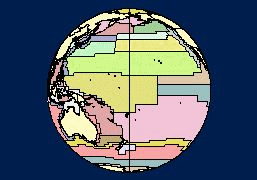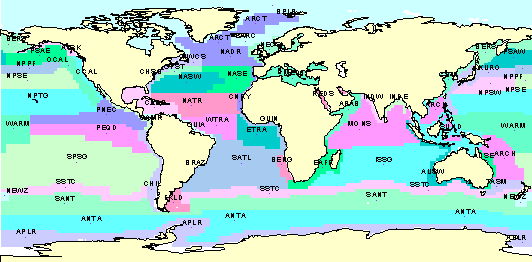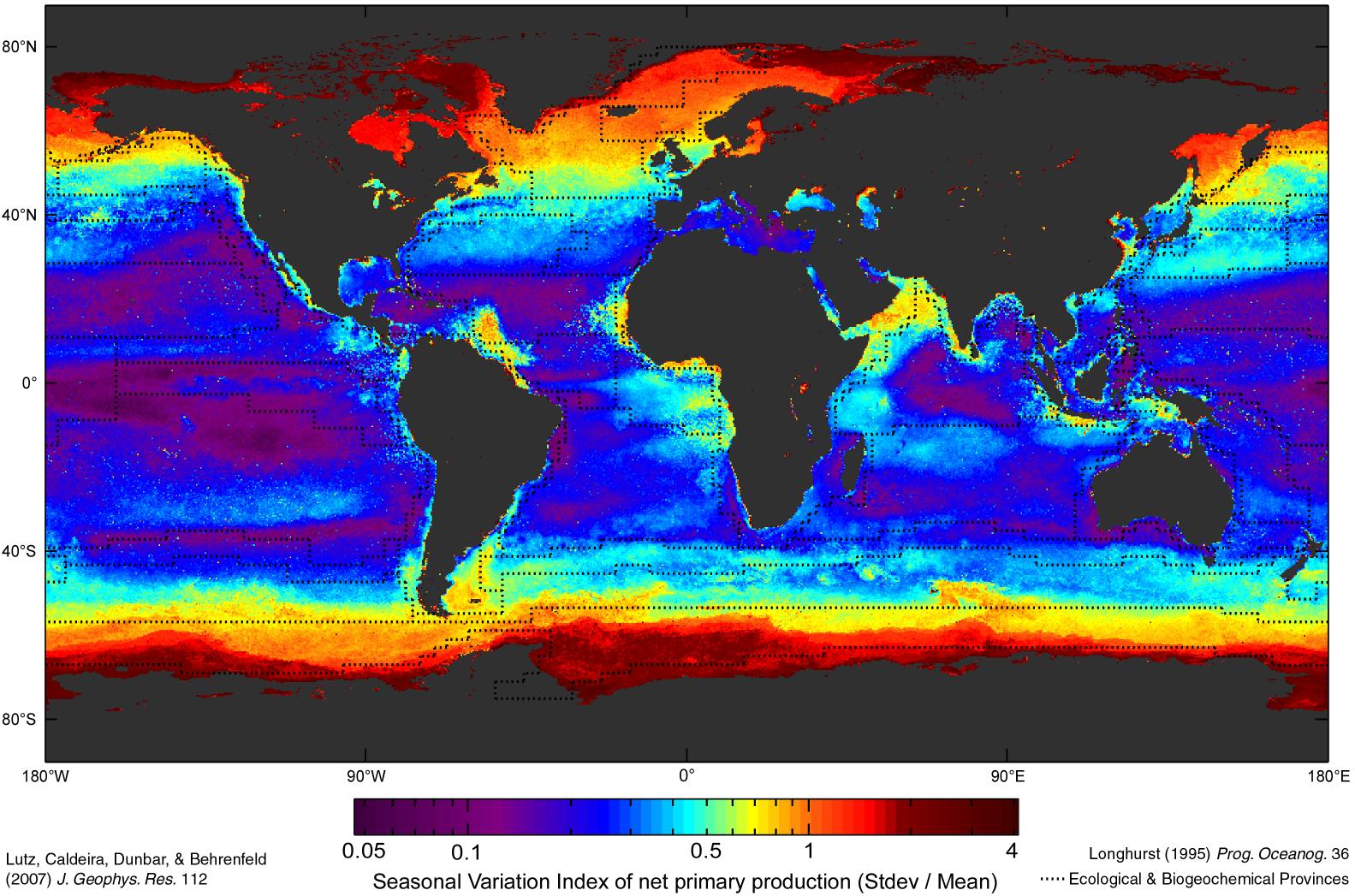Dividing the world’s oceans based on prevailing primary productivity levels.
Different primary productivity levels are maintained by dominant currents, gyres and other regional oceanographic features. Satellite images, analysed for water colour, helped decide where the boundaries should lie. Though the placement of boundaries between provinces would obviously shift between years and even between seasons, those shown here are intended to show their average position.
Some of that seasonal variation in primary production is mapped above from Lutz et al. (2007).
Though very large in area, these provinces could prove very useful as a framework, along with a nested system of large marine ecosystems, when developing smaller-scale ecological models vital to future management of marine systems. Other important classification schemes for the world’s oceans are the Large Marine Ecosystem (LMEs) and Marine Ecoregions.
Reading
Longhurst, A. 1995. Seasonal cycles of pelagic production and consumption. Prog. Oceanogr. 36:77-167.
Longhurst, A. 1998. Ecological geography of the sea. San Diego: Academic Press.
Longhurst, A., Sathyendranath, S., Platt, T., and Caverhill, C. 1995. An estimate of global primary production in the ocean from satellite radiometer data. J. Plankton Res. 17:1245-71.
Lutz, M.J., Caldeira, K., Dunbar, R.B., and Behrenfeld, M.J. 2007. Seasonal rhythms of net primary production and particulate organic carbon flux to depth describe the efficiency of biological pump in the global ocean. Journal of Geophysical Research 112: C10011, 26pp.
Platt, T., Sathyendranath, S. 1988. Oceanic primary production: estimation by remote sensing at local and regional scales. Science 241:1613-20.
Sathyendranath, S., Longhurst, A., Caverhill, C.M., Platt, T. 1995. Regionally and seasonally differentiated primary production in the North Atlantic. Deep-Sea Res. 42:1773-1802.
Watson, R., Christensen, V., Froese, R., Longhurst, A., Platt, T., Sathyendranath, S., Sherman, K., O’Reilly, J., Celone, P. and Pauly, D. 2003. Mapping fisheries onto marine ecosystems for regional, oceanic and global integrations. In: Large Marine Ecosystems of the World: Trends in Exploitation, Protection, and Research. Ed. G. Hempel and K. Sherman. Elsevier. 440 pp.



